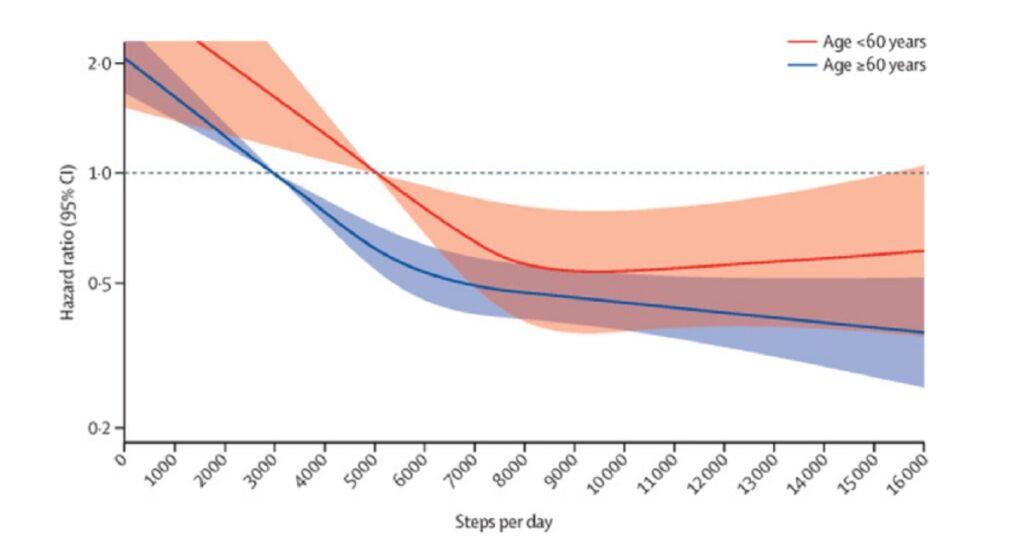For years, the mantra of 10,000 steps a day has been heralded as the gold standard for fitness. Every fitness tracker, health guru, and smartwatch has ingrained this figure into our daily routines. However, recent scientific inquiries suggest that the true number might be significantly different.
Debunking the 10,000 Steps Myth
The 10,000-step target has not always been a fixture in fitness culture; it actually hails from Japan in 1965. A local company unveiled a pedometer dubbed “Manpo-Kei,” translating to “10,000 steps meter.” This figure was selected because in Japanese symbolism, the character for 10,000 (万) visually resembles a figure in motion. There was no scientific basis for the number, yet it quickly gained traction and became the benchmark for daily movement.
Fast forward to the present, this numerical target has woven itself into our fitness consciousness. But mounting evidence challenges this conventional wisdom, suggesting many people may actually achieve optimal health with a significantly lower step count.
Emerging Science: 8,000 Steps as the New Benchmark
According to a recent study published in JAMA, the optimal step count for most individuals is around 8,000 steps a day. Researchers concluded that exceeding this amount doesn’t necessarily confer additional health benefits, nor does it negatively impact well-being. In essence, walking beyond 8,000 steps is not linked to improved health outcomes.
Moreover, consistent walking at this level was linked to significant health benefits, particularly in reducing disease risk and enhancing overall physical condition. This research signals a paradigm shift: it’s no longer about obsessively hitting 10,000 steps, but rather finding a sustainable walking goal that suits your lifestyle.
Age Matters: Tailoring Goals for Different Generations
Interestingly, research indicates that the ideal step count is age-dependent. A meta-analysis published in The Lancet unveiled intriguing correlations between step counts and various age demographics.
For those over 60, the sweet spot was around 7,000 steps per day. This comprehensive study, encompassing over 47,000 participants from 15 different studies, revealed that those above 60 who upped their steps from 3,000 to 7,000 saw a staggering 50% reduction in mortality risk. However, stepping beyond that limit didn’t provide additional benefits, and surprisingly, it did not correspond to further decreases in mortality risk.
In a twist, for younger adults (under 60), health advantages were found to persist up to 8,000 steps per day. Beyond this threshold, increasing step counts appeared to correlate with a slight rise in mortality risk, compelling us to reconsider the narrative surrounding excessive walking.
What’s the WHO’s Stance?
While these studies propose specific step targets, the World Health Organization (WHO) adopts a broader view. Rather than fixating on step numbers, they advocate for the duration of physical activity. For adults aged 18-64, the WHO recommends at least 150-300 minutes of moderate aerobic activity each week, or 75-150 minutes of vigorous activity. They also stress the importance of engaging in muscle-strengthening activities at least twice a week.
For those over 64, the recommendations remain consistent, underscoring that all forms of physical activity are essential for maintaining overall health.
The Bottom Line: Move, Don’t Fixate on the Figures
So, should we completely disregard the 10,000-step norm? Not quite. Walking continues to be an exceptional form of exercise, and targeting 8,000 steps is realistic and beneficial for many. The crux of the matter is finding an enjoyable, sustainable routine that resonates with you. Whether you prefer walking, cycling, swimming, or hitting the gym, staying active is paramount.
The findings suggest it’s time to stop fixating on arbitrary figures like 10,000 steps. Instead, focus on enhancing your movement, remaining active, and choosing an approach that’s manageable and advantageous for your personal well-being. Remember, every step counts—so keep moving!







